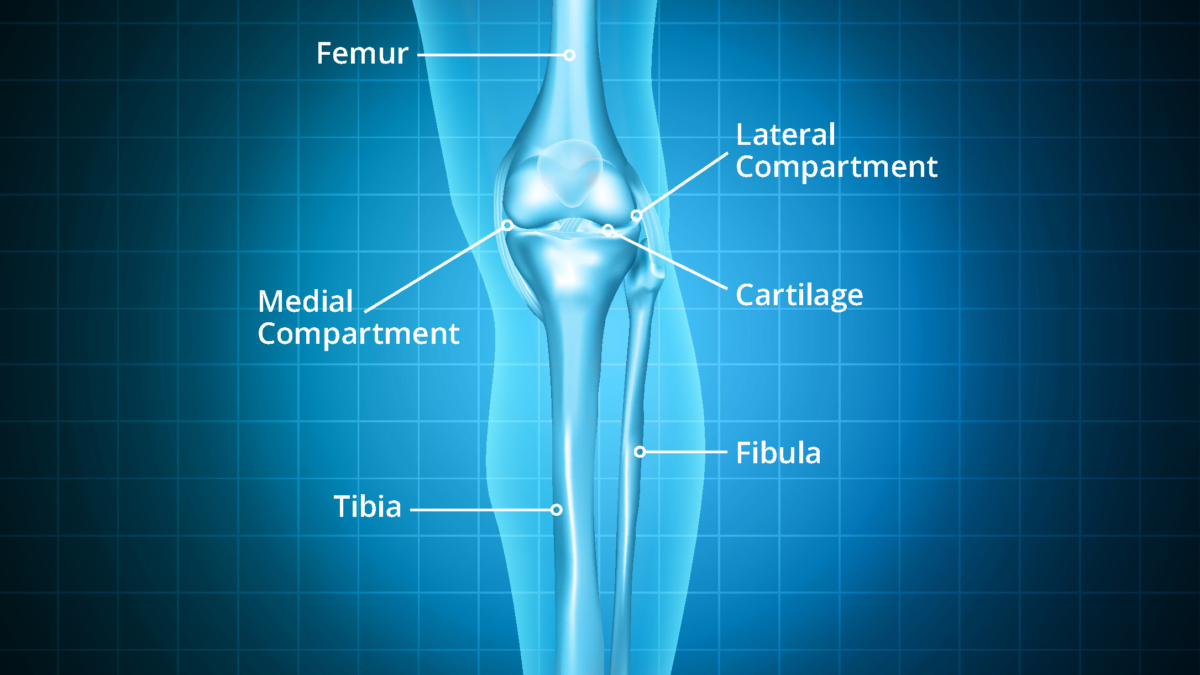Understanding the root cause of knee pain is essential, especially when your daily activities involve significant leg work like dancing. A pain-free knee joint means more flexibility, better performance, and an overall healthier lifestyle.
Understanding the Knee
The knee, one of the largest and most complex joints in the body, is composed of the following elements:
- Bones: The femur (thigh bone), tibia (shin bone), and patella (kneecap) come together to form the knee joint.
- Cartilage: A tough, lubricating tissue that covers the ends of the bones, aiding in smooth movement and friction reduction. The knee comprises two types of cartilage: articular cartilage and menisci.
- Ligaments: These tough, flexible tissues connect bones to other bones. The knee primarily houses four ligaments: the anterior cruciate ligament (ACL), posterior cruciate ligament (PCL), medial collateral ligament (MCL), and lateral collateral ligament (LCL).
- Tendons: These structures connect muscles to bones. The quadriceps tendon (connecting the quadriceps muscle to the patella) and the patellar tendon (connecting the patella to the tibia) are key tendons in the knee.
- Muscles: The quadriceps, hamstrings, and calf muscles are crucial to knee movement.
- Bursae: Small fluid-filled sacs, bursae, serve as cushions for the knee, reducing friction between joint tissues.
What Causes Knee Pain?
Knee pain can be attributed to a variety of factors:
- Aging and degeneration: Natural wear and tear lead to a condition known as osteoarthritis, common among older adults.
- Injury: Injuries to any part of the knee can cause pain. Common injuries include ACL tears, meniscus tears, and patellar tendonitis.
- Overuse: Excessive use of the knee joint, as in the case of athletes, can lead to pain.
- Inflammatory conditions: Diseases and conditions like rheumatoid arthritis and bursitis can cause knee inflammation, leading to pain.
- Obesity: Extra weight puts additional pressure on the knees, causing pain and increasing the risk of osteoarthritis.
How to Avoid Knee Damage?
Preventing knee damage is as important as treating it. Here are some measures to keep in mind:
- Maintain a healthy weight. Extra weight increases pressure on knee joints, leading to wear and tear over time.
- Regular exercise. Strengthen the muscles supporting your knees by engaging in regular, balanced workouts.
- Wear proper footwear. This reduces stress on your knees during exercise.
- Use correct form. This is crucial, especially during activities involving the knees. Always ensure your knees align with the direction of your toes when you’re stretching or doing strength exercises.
- Listen to your body. Rest when needed and avoid pushing your body to its limit, especially when you feel discomfort.
Best Exercises for Knee Health
Here are five beneficial exercises for maintaining healthy knees:
- Quad stretch: Improves flexibility and reduces tension in the quadriceps.
- Hamstring stretch: Reduces tension in the hamstrings, reducing pressure on the knee.
- Calf raises: Strengthens the calf muscles, providing better support for the knee.
- Leg presses: When done correctly, this exercise strengthens the quadriceps and other leg muscles, providing enhanced support to the knee.
- Low-impact aerobic exercise: Swimming and cycling improve overall leg strength and cardiovascular health without exerting excessive strain on the knees.
Before starting any new exercise regimen, especially if you’re experiencing knee pain, consult with a dance therapist. They can help you develop a plan that’s safe and effective for your specific needs.
Remember, our bodies are designed for movement. Take care of your knees, and they’ll take care of you, whether you’re dancing, running, or simply going about your everyday activities.

